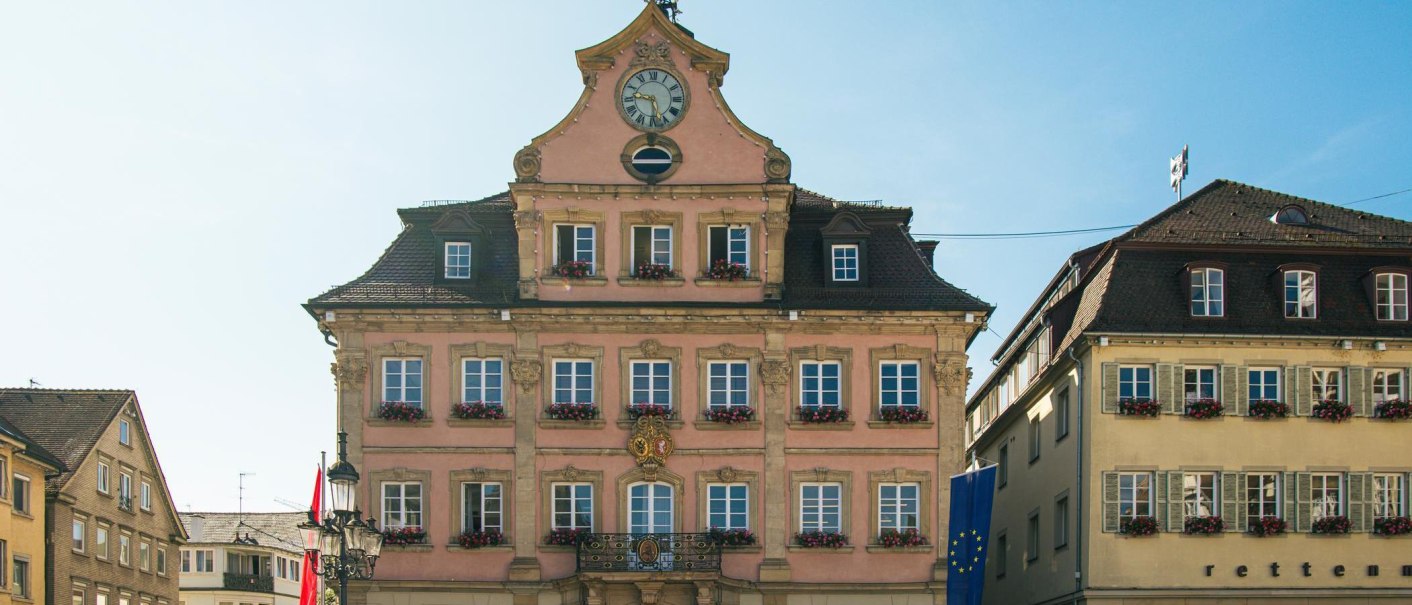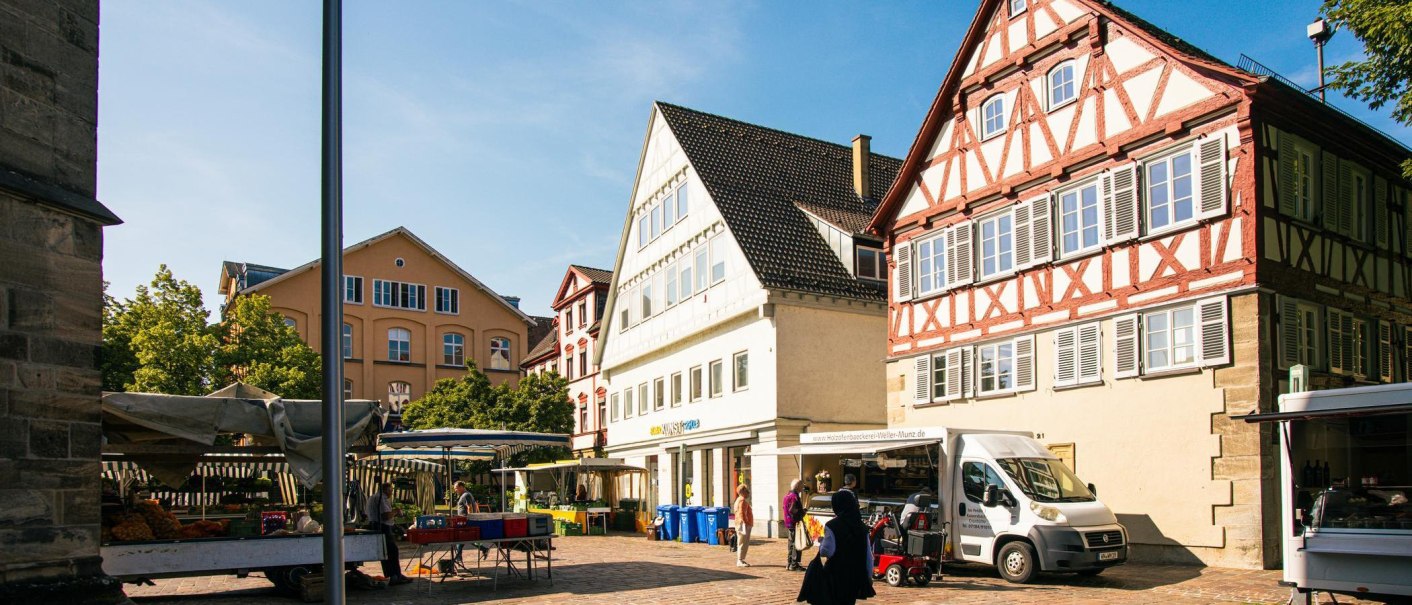Schwäbisch Gmünd
Schwäbisch Gmünd is in the center of southern Germany in the region east Wuerttemberg in the east Alb district. Schwäbisch Gmünd is the oldest Staufer city. Picturesque at the foot of the Swabian Alb and the Dreikaiserberge, Schwäbisch Gmünd is a city with atmosphere and a southern quality of life. The city is in the upper Rems Valley.
History
Marktplatz In the 2nd century A.D., a protective wall built by Roman legionnaires, the Limes, passed through the area of Schwäbisch Gmünd. In the second half of the 3rd century, the Alemanni overtook this border formation and settled in the strips of land given up by the Romans. The area "Gamundias", mentioned for the first time in a document falsified in the 9th century to the year 782 for the monastery St. Denis near Paris, probably belonged to the properties of this monastery in the dukedom of Alamannia. In the year 1162, the community already had city rights which were granted during the reign of King Konrad III (1138-1152). After the downfall of the Staufers, the city reached the status of a free imperial city through several stages. Above all in the late Middle Ages and in the early modern age, having become relatively wealthy through the intermediate trade with cloths and wines and the production and sales of scythes in all of Europe, it was possible to create a small state area through acquisitions and the ownership of a city hospital and the monastery. As of the 17th century, the gold and silver trade became the predominant guild. The city remained orthodox in the time of the reformation. During the persecution of witches before and after the Thirty Years' War, in Schwäbisch Gmünd, around 50 women and men were victims of the witch-hunts.
In the middle of the 18th century (ca. 1730 - 1770), the city once again experienced a great cultural upswing. The magnificent furnishings of the churches, the rebuilt patrician's houses as well as the marketplace, reconstructed by the city building master Johann Michael Keller, still characterize the late Baroque flair of the city today.
The Peace of Luneville in the year 1801 and the Imperial Deputation in 1803 sealed the end of the "free imperial city" Schwäbisch Gmünd and its territory became an integral part of the kingdom of Wuerttemberg. The Rems Valley railway, opened in 1861, made new economic initiatives possible and brought wealth. In the founding years of the German Reich (until ca. 1890), the city was able to take first place in Germany for processing silver. As of 1929, massive unemployment began in the silver and gold industry in Schwäbisch Gmünd. In 1934, Schwäbisch Gmünd was declared an emergency area. Through the settling of differing industries, however, the unemployment could be slowly conquered by the beginning of the forties. Schwäbisch Gmünd itself remained undestroyed in the Second World War and was captured by American troops on 20 April 1945.
After the war, Schwäbisch Gmünd had to meet its greatest challenge. In 1949, a population census showed that 33,578 people lived in the city, among them 8,279 expellees. These expelled Germans brought at times their own industry with them. In Schwäbisch Gmünd especially the glass and jewelry industries from Gablonz and Silesia settled.
In the seventies and eighties of the 20th century, Schwäbisch Gmünd changed drastically. The old barracks - the former Dominican monastery - were rebuilt into the culture center of the city, a new municipal hall in the historic ambience of the city garden with its Rococo castle was built, the old hospital of the Holy Spirit was given new tasks of administration and of geriatric care and is used as a city library. In addition the late Roman Johanniskirche and the cathedral, built greatly in the 14th century by the Parlers and renovated in the past decades, the largest hall church in southern Germany, still stand for the unchangeable historical traditional lines in the city.
Today Schwäbisch Gmünd has around 62,000 inhabitants but still had to cease being its own district seat after the district reform in the year 1972 and is today a large district city in the newly created eastern Alb district.




